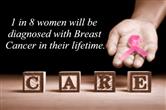November 30, 2022
by Elizabeth Pratt

Psychologists are struggling to meet demand amid a rising mental health crisis.
Results from the American Psychological Association’s 2022 COVID-19 Practitioner Impact Survey show that most practitioners have no openings for new patients and have waitlists that are longer than before the pandemic began.
[More]
December 15, 2021
by Elizabeth Pratt

Smartphone and computer-based treatments are effective at reducing symptoms of depression.
Research published in the Psychological Bulletin found that digital interventions could be effectively used as a treatment for depression for a variety of groups with different levels of depression.
[More]
When people talk about expectations they often wrap it with a preceding description such as “high expectations” or “low expectations” or “no expectations” at all. It is interesting when you look at the traditional definition of what an expectation is and ponder how it fits for your life.
[More]
I do not believe that counselling needs to be isolated and enclosed within four walls… what happens in sessions should be able to be used on the outside, in someone’s lived life. Sometimes this is called experiential therapy and is why I believe that horses help creating practical applications of the utmost importance. Can you imagine having 40 acres and five horses as a part of the counselling experience? What kind of a world would that create to allow the freedom to explore and express yourself.
[More]
November 27, 2013
by Stephanie Byrne

The glamorization of drama on television and in reality shows paints a very different picture about how intimate female friendships are in real life. Friendships are being displayed publicly where the women are acting like they are still going through the " toddler terrible two's." We are all ultimately being represented in an extremely negative manner by these shows.
[More]
October 12, 2013
by Ashley Marie

Breast cancer can touch anyone. Here is a story of love and courage in the face of this struggle.
[More]
September 10, 2013
by Ashley Marie

September 10 is World Suicide Prevention Day.
On this day, governments lead new initiatives to help prevent suicide, conferences and lectures are provided to raise awareness about suicide, and candlelight ceremonies are held in remembrance of those who died from suicide.
Suicide and suicidal thoughts affect individuals all across the globe. According to the World Health Organization (WHO), about 1 million people commit suicide every year.[1] On average, this means that someone dies from suicide every 40 seconds and someone attempts to commit suicide every 3 seconds.
These statistics are tragically high. The WHO estimates that more people die from suicide than from armed conflicts. For teenagers and young adults, suicide is one of the primary causes of death. Suicide also tends to be more common among men than women.
Country with the Highest Suicide Rate
The country with the highest rate of suicide in the world is Greenland.[2] Even Japan, a country that has a history of high suicide rates, has 51 suicides per 100,000 residents. In Greenland, 100 die from suicide per 100,000 inhabitants.
This mental health issue is so widespread that just about everyone in Greenland knows someone who has committed suicide. And this is a historically recent phenomenon. In the early 1900s, this country’s suicide rate was merely 0.3 people per 100,000 residents. This rate dramatically increased in the latter part of the 20th century, especially in the 1970s and 1980s.
Researchers argue that residents of Greenland employ suicide methods that allow for a low chance of survival. 9 in 10 men commit suicide through shootings or hangings, and this method of killing also applies to 7 in 10 women.
It is difficult to determine why suicide is so prevalent in Greenland. Some theorists suggest that it can create a vicious cycle; once one person commits suicide, others may become more inclined to do the same. Some point to Greenland’s issues with poverty. Others highlight that 88% of the country’s population is Inuit, and much like North America, many of them suffer from alcoholism. Though Greenland has very harsh winters (which could contribute to depression), studies show that the highest rates of suicide occur in the summer.
Suicide in North America
Though suicide is not as prevalent as it is in Greenland, the United States and Canada continue to suffer from suicides.
In 2009 in the United States, there were 36,909 deaths from suicide – and this number is higher for men than women, as well as for people of color than Caucasians.[3] (For more information about the relationship between minority groups and mental health issues, read What Can You Do to Raise Awareness?). Between 2008 and 2009, suicide was the only leading cause of death in the United States that showed a significant increase. Suicide is the 10th leading cause of death for Americans, and there are 12 suicides per 100,000 residents.
Similar to the United States, in 2009 Canada’s suicide rate was 11.5 suicides per 100,000 residents. In Canada, the highest rates of suicide occur among those between the ages of 40 and 59, and suicide is again more common among men than women.
Suicide Rates: Men Versus Women
Again and again, studies have found that suicide rates tend to be higher among men than women.
This is a difficult pattern to explain, but Payne et al. suggest that our socially constructed notions of masculinity and femininity may have an effect on suicidal behaviors. Because male gender roles focus more on strength and risk-taking behaviors, men may be more likely than females to commit suicide.[4] Men might also feel more pressure to be ambitious and successful, which can lead to depression in times of economic turmoil and higher rates of unemployment. This is especially difficult when men feel the need to provide for their family.
Therapy to Help Prevent Suicide
Suicide is a serious mental health issue, but there are ways to help prevent it. Active Minds is an organization that aims to raise awareness and provide support for suicide prevention. They stress the importance of seeking help if you or someone you know suffers from suicidal thoughts or behaviors. They have a 24-hour suicide prevention lifeline (1-800-273-TALK or 1-800-273-8255) if you or someone you know needs to talk to someone. Long-term therapy is also highly recommended for those suffering from suicidal tendencies.
According to WHO, friends and family members of those contemplating suicide should also look for warning signs. If you discover that someone you know is threatening to harm him or herself, do not hesitate to seek help.
[1] Suicide. 2013. World Health Organization. [online] Available at: <http://www.who.int/topics/suicide/en/> [Accessed 2 September 2013].
[2] George, J. 9 October 2009. The Suicide Capital of the World. Slate. [online[ Available at: <http://www.slate.com/articles/news_and_politics/dispatches/2009/10/the_suicide_capital_of_the_world.single.html#pagebreak_anchor_2> [Accessed 2 September 2013].
[3] Kochanek, K.D. et al. 29 November 2011. National Vital Statistics Report, v 50 no 3. [online] Available at: <http://www.cdc.gov/nchs/data/nvsr/nvsr60/nvsr60_03.pdf> [Accessed 2 September 2013].
[4] Payne et al. 2008. The social construction of gender and its influence on suicide: a review of the literature. Journal of Men's Health. [online] Available at: <http://www.sciencedirect.com/science/article/pii/S1875686708000146> [Accessed 2 September 2013].
Directed by Canadian Film Maker Mr.James Cameron
Like all great artists and masters of language, Mr. Cameron's genius opens up the deeper and sometimes hidden collective themes and truths of life. On the surface, "The Abyss" presents a good story filled with elements of mission, danger and risk. Basically the story is about a team of people on an undersea drilling rig who are asked by the military to salvage a wrecked submarine in the depths of the ocean. The incentive for the team's acceptance is money. They are beset by numerous catastrophes; however, in the midst of these they encounter an advanced non human race of aquatic beings living in the deeper abyss. These translucent beautiful aliens can only be compared to the angelic.
The hero is played by Ed Harris and he is married to the heroine Mary Elizabeth Mastrantonio. In the midst of their heightened marital discord and disharmony, they must join forces for the sake of the mission. It seems an impossible task for them to transcend their anger and bitterness toward one another.
The Armour We Wear
I was reminded of many underlying truths presented in and through this story. The personas we choose to develop at the early stages of our lives are usually quite strategic. These masks, or coverings, are usually linked with our basic needs to belong, to be loved, to be included and to feel a sense of self worth.
Appearances and what one displays to the world, may hide that which is hidden in the depths of one’s being. In the abyss of one’s heart and soul there may be such caged pain, bitterness, resentment and anger.
If the basic needs to feel a sense of self confidence and self worth have been compromised during the developmental stages of one’s life, then pain sets in. This affect may be too difficult to handle and a primal reaction is released. Skins or walls are grown around the pain so one does not have to feel insignificant. As I watched the heroine, I was reminded how we, as humans, all have a common ground. However unique we are, we all share this truth: the basic need to be regarded with dignity and respect.
The challenge of true growth is often thrown at us in unexpected and vicarious ways. It is very often that in the midst of a crisis, loss and earth shattering experience that our walls crumble, armour falls and skins are shed.
We are enthralled...
as the story becomes more complicated with the uncovering of an evil plot brought aboard by two of the military members.
The heroine is shunned by the team. Although she is clever and can run a ship, they see her as an arrogant and dominating woman who is far too self serving. She wears her intelligence and superior position as a threat to others. However, it is to this woman that the angelic beings first appear in the depths of her despair and helplessness.
The story takes us through chaos, the struggle between good and evil, the threat of nuclear war, the limits of humanity, pride and humility which finally lead to redemption.
The essential and core threads that create this marvellous tapestry are the moral choices made by the hero and heroine: the husband and wife. Initially we see the enraged husband take off his wedding band and throw it into the toilet only to turn back and retrieve what he has thrown away. As the story unfolds, he is the one who looks upon his unconscious apparently drowned wife and with determined passion brings her back to life.
It is the crisis that returns them to their original love through choices of forgiveness and sacrifice. We witness the vulnerability and tears of the real heroine underneath her armour after her encounter with death and her rescue by her husband. When at the crescendo of the film the hero is as well at death's door, he is saved by the gentle graceful alien of the seas.
She communicates to him an eternal truth which he embraces and which indeed makes him a hero. It is in the simple acts of forgiveness to our spouse and as well the moral choices that we make for the good of the other that set us free.
Each time we forgive the other and each time we look to others before ourselves, we become heroes of our own lives.
"Only the weak hang on to hatred and bitterness ... the strong ones forgive." - Mahatma Gandhi
Elizabeth’s Story
I have known Elizabeth for a number of years. Outwardly she gives the impression of being a very quiet, gentle and passive woman. I had never heard her disagree with anyone. She is generous, fair minded and loving towards everyone.
She approached me a while back as she was receiving disturbing dreams and felt that her whole life was being shaken. She was experiencing a high degree of anxiety and depression. Her relationship with her husband was unfulfilling and her job as a nurse was not any better. All around she was in a desperate state. Her mother lived with her and that relationship was also confining. Physically her anxiety and stress manifested itself as a systemic yeast infection. She was extremely tired and had little energy and was fearful about what her dreams presented. I learned that Elizabeth’s background included an alcoholic father who had physically abused both her and her mother. She was an only daughter and a woman who never really became separated emotionally from her mother. Elizabeth never remembered disagreeing with her mother: she was a quiet, submissive child who grew into a quiet submissive woman.
There were two qualities which I deeply admired in her. Above and beyond all her pain, she was willing to commit herself to a long and arduous task of self discovery. It was her courage and determination to walk this narrow path and to become a better person which influenced my decision to become her companion along her journey. In the beginning she had many dreams of her childhood. It was as if she had to go back and relive her youth for the purpose of healing. She was invited to enter into her dreams and unlock whatever pain lived there. No moving forward could happen until she accomplished this process.
Our memories carry the burdens of the past which weigh heavily on the present. That is why it is so important to go back and discover the root of one’s pain. No real progress can be made unless past issues and conflicts are resolved. A purgation of the ego and persona and a stripping of its’ attachments are prerequisites for any movement towards the center of one’s true self. Old attitudes must be released and purified in order to clear the way for the journey inward and the discovery of one’s true self. Self-knowledge requires this intense confrontation with the darkness within.
The passage from the unknown to enlightenment demands discipline and great courage. As Elizabeth moved through the dreams of her childhood, much sadness was released through our work together. Active imagination and focusing with her body’s response to pain was part of the process of her healing. Experiencing the state of the child within was a powerful vehicle for the release of her suffering. Then one day she came to me with the following dream:
“My husband is raping me and I feel much oppression. In another room I hear a baby cry and I go to find it because it needs to be fed.”
We worked with the images from the dream. Elizabeth re-entered the dream and I asked her to be with and experience the feelings of oppressiveness and fear. After a while I asked her to remember times in her life when she felt very sure of herself; when she felt she was in control of her life and when she felt loved. With these positive feelings she replayed the dream, only this time she went to her husband and told him all that was in her heart. He started to cry and she realized he too was in pain. Then she focused on the baby and went to the room where the baby was crying. She picked her up and comforted her reassuring the baby that she would not abandon her again.
She placed the baby in a special place in her home. This represented for her a deep part of herself: an inner child which she had neglected, some innate potential which was associated with her power as a developing woman. In the dream, the baby was crying. In order for the baby to stop crying or in order for her to stop hurting, the baby had to be fed. In other words, Elizabeth had to take care of her own needs and she had to feed that which cried out from the depths of her spirit: her Self. She decided she would focus on trying to bring peace and order within herself rather than attempting to focus on her relationships around her. Peace begins within and Elizabeth agreed that if she would arrive at some ego strength and inner harmony, this would have an effect on her outer life.
A few weeks later she came to me with the following dream:
“ I am in a room; there are horses there and suddenly a woman enters the room. She has a gun and is pointing it at me. I am petrified.”
A horse is a powerful symbol of one’s life energy. The woman who is threatening Elizabeth with a symbol of power “the gun” is a part of her Shadow. When one attempts to integrate inner forces there is always resistance, for in a sense the forces must give up their power to the developing personality. In active imagination, I guided Elizabeth to the woman and asked her to befriend her. Elizabeth told her she needed her and her power to help her gain control of her life. After some time the woman, whom Elizabeth named Mira “after her own middle name” agreed to help. Then Mira helped Elizabeth ride one of the horses and although awkward she felt very good.
Then she had the following dream which frightened her to the point of tears:
“A dark, ugly, half human thing is in the corner of my room. I am so repulsed by this creature yet I realize it must be cared for. I place it in my bed and try to comfort it yet I can barely look at it as it is so horrible.”
Finally, that which was buried within the depths of her psyche was released into the light. Although she felt that she had slipped backwards, I knew this dream was a giant breakthrough for her healing. During the time we were working together she compared her life to a tunnel like place which was dark and constricting. It was as if Elizabeth was in a place of nowhere and she could no longer depend on the past securities yet she could not imagine a vision of where she was going.
This in between place is compared to a birth canal; Elizabeth was in a time of waiting, a time of transition and a time of the unknown. Now she had met her darkness, her shadow side which repulsed her. This half human creature symbolized all that she had formally denied. It comprised the feminine power of Mira, the anger at being put down by others whom which she had never made contact with and the underlying potential need for her developing personality. However ugly, Elizabeth realized it needed her to care for it and so she gave it a place of rest in her bed. She attempted to welcome it as part of her and in this act was the essence of transformation. Just as the princess who kisses the repulsive frog in the “The Frog Prince” gave life to a part of herself, so too Elizabeth gave life to herself in the integration of her Shadow.
As she stepped back into the dream, I asked her to move towards her creature. With great courage she looked into the monster and her fear changed as Elizabeth felt the creature was no longer threatening. It was full of sadness. She went to it – her – and embraced her and named her Mary. She promised she would never leave her again and never reject her own self.
The sadness thus represented that part of her true self that had been denied, raped or rejected by Elizabeth. Elizabeth realized that the violent figures she had dreamed of, such as the rapist, were part of her and she accepted the idea that she violated her own being in subtle ways as the dreams had shown. By embracing those aspects of herself, she began to integrate them slowly: a process which is part of a life long journey.
“A man has many skins in himself, covering the depths of his heart. Man knows so many other things; he does not know himself. Why, thirty or forty skins or hides, like an ox’s or a bear’s, so thick and hard, cover the soul. Go into your own ground and learn to know yourself.” – Meister Eckhart
Many of us plan vacations to get away from our busy schedules. Arlene Uhi’s text, The Complete Idiots Guide to Beating Stress, suggests that much of the stress we experience is often connected to our daily routines (i.e. commute, commitments, and concerns) (Uhi 2006).
According to a recent 2009 study completed by Joudrey and Wallace, active leisure pursuits (such as taking a vacation) helped reduce job related stress among a sample of 900 participants (Whitbourne 2010). Beyond the individual benefits, taking a vacation can also help increase family bonding, communication, and solidarity.A vacation can (Uhi 2006):
Slow down our frantic routine
Temporarily relieve us from our chores
Provide space and time to reflect
Provide space to recondition negative habits
Teach us new stress-beating skills that we can adapt to our daily life.
The author suggests that you choose a getaway that will instill calmness and relaxation. Taking a break from routine can help decrease hormone activity related to stress and hyperarousal. Give yourself an opportunity to escape from your daily rituals and experience something new. Any new activity that breaks away from your comfort will likely lead to increased satisfaction and joy.
Activities you may want to consider:
Pampering Spas
Receiving a massage
Enter a whirlpool or hot spring
Mud bath treatment
Getting a Facial
Yoga Vacations
Learn and practice Yoga
Enjoy peaceful surroundings
Meet a diverse group of individuals
Active Adventures
Bicycling Tours
Camping
Golf or Tennis Camps
Multisport tours
Walking Tours
Beach or Patio Vacations
References:
Uhl, A. (2006). The complete idiot's guide to beating stress. New York, N.Y: Alpha Books.
Whitbourne, Susan (2010). The importance of vacations to our physical and mental health. Psychology Today: Sussex Publishers
Counselling Services for York Region